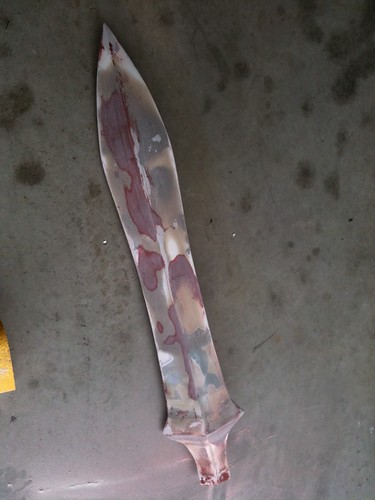Pilot
Sr Member
Awesome, glad it worked out for ya!Found exactly what I needed at Harbor Freight for $5 for 5 different sized mini saw blades for my rotary tool... cut through the fiber glass like butter.
Thanks!
Awesome, glad it worked out for ya!Found exactly what I needed at Harbor Freight for $5 for 5 different sized mini saw blades for my rotary tool... cut through the fiber glass like butter.
Thanks!
So has anyone tried out those cutting printers?
Amazon.com: Cricut Expression 290300 Personal Electronic Cutter: Arts, Crafts & Sewing
Looks to me, from a quick pass through a couple of CriCut pages, that those machines are cartridge-controlled rather than taking their commands from a computer connection. I doubt you could get a CriCut to even look at a pepakura pattern.
The Silhouette SD, a similar machine which I purchased last year for less than the CriCut you linked (not MUCH less - was $180 for the machine, IIRC), will accept commands from the pepakura program over a USB cable, and works like a charm.
it doesn't by chance have a perforation feature does it? I am assuming it probably just cuts the piece out and that's it (still a huge time saver).


The problem is that I've found that the paper does'nt like paint without something like resin inbetween. So the trick is to sand the resin but don't sand down to the paper. For me I use urathane resin on all my pep pieces, I brush 2-3 coats on the outside and do a quick slush cast inside and it turns out pretty good and not a lot of sanding to do.
I don't use fiberglass anymore at all, all I use inside and out is urathane resin. I hardly even use bondo anymore, I use sheetrock putty now, sand and brush a coat of resin after the sanding is done.
it doesn't by chance have a perforation feature does it? I am assuming it probably just cuts the piece out and that's it (still a huge time saver).

I don't use fiberglass anymore at all, all I use inside and out is urathane resin. I hardly even use bondo anymore, I use sheetrock putty now, sand and brush a coat of resin after the sanding is done.
Do you mind my asking where you get your urathane resin at? I have found a few places online, but I haven't really heard from anyone on here where the buy.
I use Bondo Spot Putty.
You have to texture the model with an external 3D program. If you are building the model from scratch, this is easy to do and you should already know how to build a UV map and texture. Assuming this is a pepakura file that you want to color then you have to do something like:I've seen a few pep models that have had colors assigned to different parts and wanted to know how it's done. I've tried playing with the textures in Designer but have no managed to get them in there.
